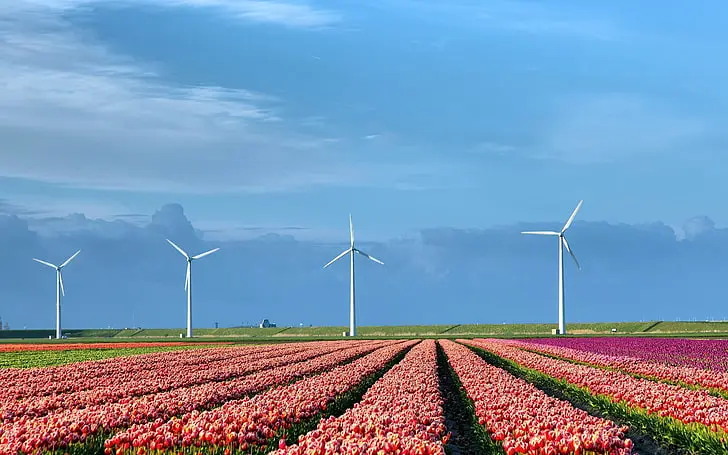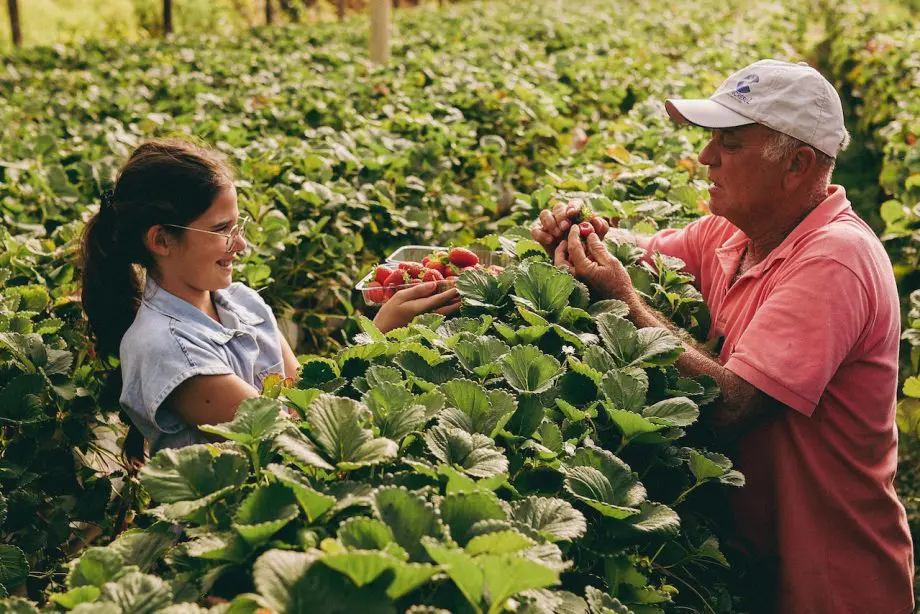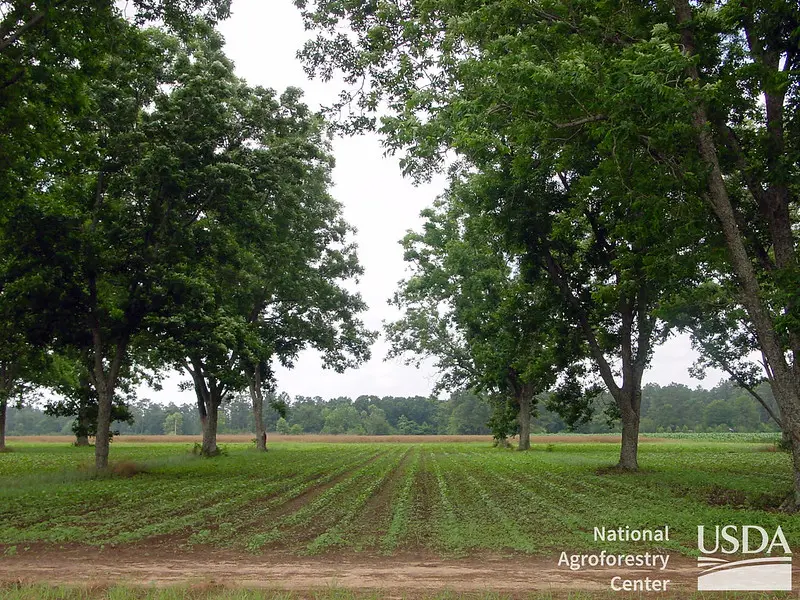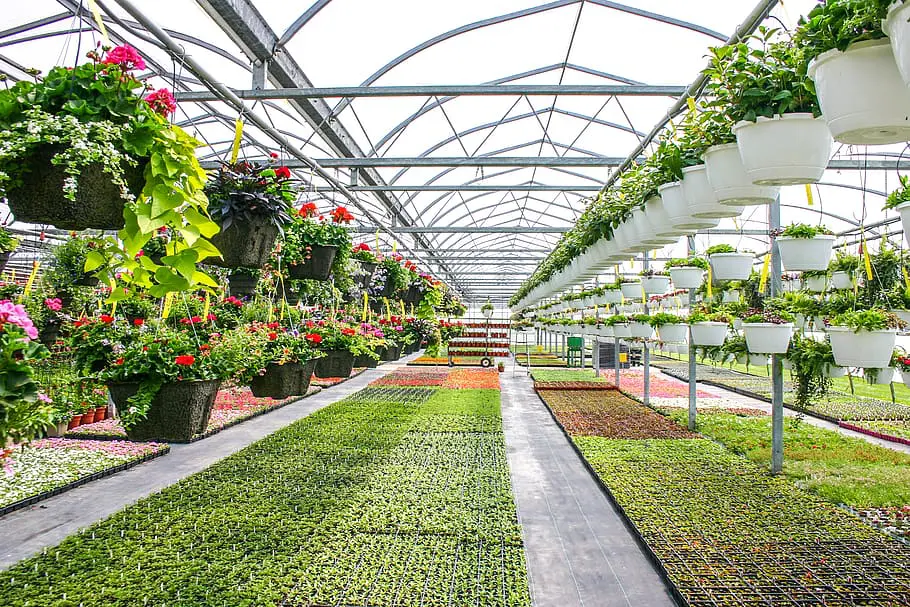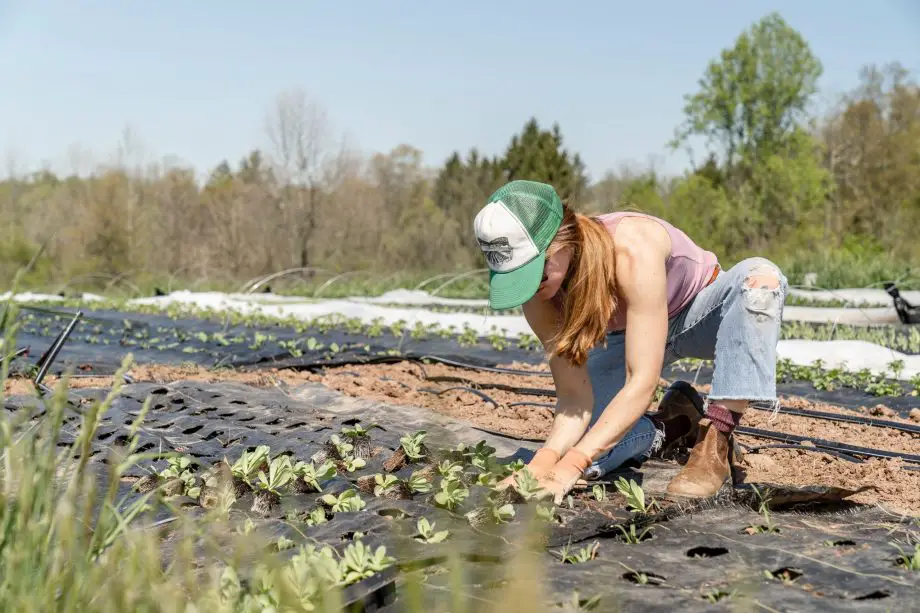
How can farmers adapt to climate change? From tech innovations to traditional wisdom, this blog covers it all to help farmers thrive in a changing climate.
So, you’re wondering how can farmers adapt to climate change, right? Well, you’re not alone.
With the climate throwing curveballs left and right, from scorching heat waves to unpredictable rainfall, farmers are on the front lines.
But don’t worry, this isn’t a doom and gloom story. In fact, it’s quite the opposite.
This blog post is all about the innovative and downright clever ways farmers are rolling with the punches, ensuring food security, and even turning challenges into opportunities. Stick around, it’s going to be an enlightening read!
How Can Farmers Adapt to Climate Change?
Farmers can adapt to climate change by implementing a range of strategies such as using drought-resistant crops, optimizing irrigation methods, and diversifying crop types. Technological solutions like precision farming and weather advisory systems also play a key role. These measures enhance food security and help farmers navigate extreme weather events effectively.
So you’ve clicked on this post because you’re curious about how farmers can adapt to climate change, huh?
We’re diving deep into the nitty-gritty, from the latest tech gadgets that make farming more climate-resilient, to age-old practices that have stood the test of time.
We’ll even explore the financial and informational support systems that are making a world of difference.
Trust me, by the end of this read, you’ll have a whole new perspective on the agricultural sector’s battle against our changing climate. Ready to dig in?
The Urgency of Climate Change Adaptation for Farmers
Let’s get real for a second. Climate change isn’t some far-off issue; it’s happening right now, and it’s hitting the agricultural sector hard.
Imagine you’re a farmer, and you’ve been growing the same crops for years.
Suddenly, the weather patterns you’ve come to rely on are all over the place. One season it’s a drought, the next it’s flooding.
Your crops don’t stand a chance. That’s why adapting to climate change isn’t just a good idea; it’s an absolute necessity.
We’re talking about food security, livelihoods, and even the economy at large. So, the urgency? Yeah, it’s as real as it gets.
The Impact of Climate Change on Agriculture
Now, let’s break down what’s actually happening in the fields and barns.
Climate change is like that uninvited guest who crashes the party and messes everything up.
Extreme weather events are becoming more frequent, messing with the growing seasons and making crop yields unpredictable.
And it’s not just about the weather; we’re also dealing with soil erosion, water availability issues, and an increase in pests.
It’s like a domino effect, knock one piece down, and the whole system can collapse.
But here’s the silver lining: farmers are some of the most resourceful folks out there.
They’re coming up with innovative ways to adapt and keep the agricultural sector afloat. So while the impact is severe, it’s not a lost cause. Far from it.
The Spectrum of Adaptation Options
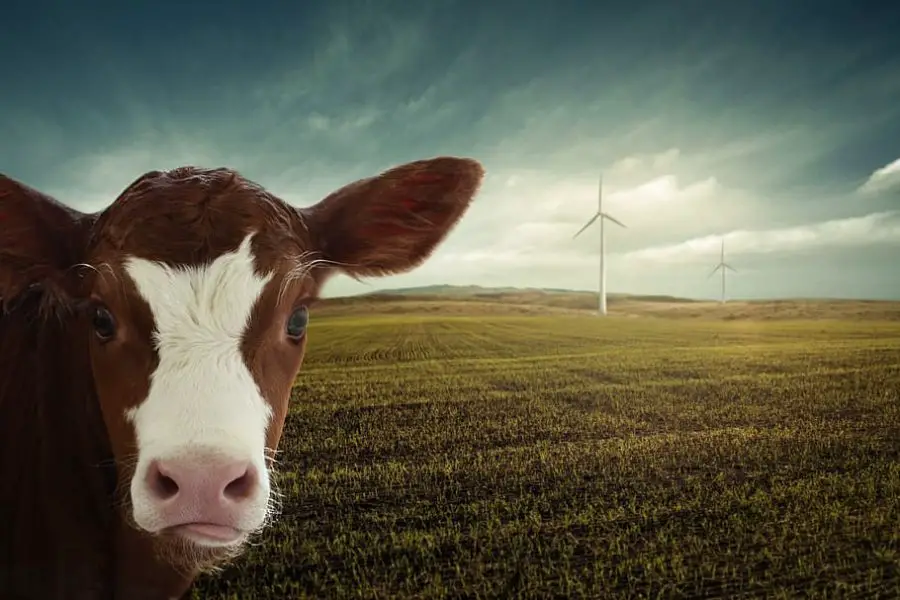
Alright, let’s move on to something really interesting, the spectrum of adaptation options.
You see, there’s no one-size-fits-all solution when it comes to helping farmers adapt to climate change.
It’s more like a buffet of choices, each with its own set of pros and cons. In this section, we’re going to explore everything from small tweaks that make a big difference to game-changing transformations that are rewriting the rulebook for farming.
So whether you’re a farmer looking for practical tips or just someone interested in how our food gets from the field to the table, you’ll find something valuable here. Let’s dive in, shall we?
Incremental Changes
So, let’s start with the small stuff, the incremental changes. You know, the kind of tweaks that might seem minor but can actually make a world of difference.
Think of it like adjusting the settings on your phone to save battery life.
For farmers, this could mean things like introducing cover crops to improve soil health or tweaking irrigation schedules to make the most of water availability.
These aren’t massive overhauls, but they add up. For instance, switching to drought-resistant seeds can lead to better crop yields without requiring a complete change in farming practices.
It’s like fine-tuning a guitar; a few small adjustments can lead to a much better sound or in this case, a more resilient farm.
Transformational Changes
Now, let’s shift gears and talk about the big, transformational changes.
These are the kind of changes that are so significant, they’re like going from a flip phone to a smartphone.
One example is adopting precision agriculture, which uses technology like drones and sensors to monitor field conditions and apply resources only where they’re needed.
This is a far cry from traditional farming methods and requires an investment in new technology and training.
Another game-changer? Shifting entirely to organic farming to reduce greenhouse gas emissions and improve soil quality.
These aren’t quick fixes; they’re long-term strategies that can fundamentally change the way farming is done.
And while they require more effort and investment upfront, the payoff in terms of sustainability and resilience can be huge.
How Farmers Can Adapt to Climate Change
Many of the practices typically associated with sustainable agriculture can also help increase the resilience of the agricultural system to impact of climate change, such as:
•diversifying crop rotations
•integrating livestock with crop production systems
•improving soil quality
•minimizing off-farm flows of nutrients and pesticides
•implementing more efficient irrigation practices
https://serc.carleton.edu/integrate/teaching_materials/food_supply/student_materials/1169
Technological Innovations

Ready to geek out a bit? Great, because now we’re diving into the realm of technological innovations.
If you’re picturing drones buzzing over fields and farmers checking soil moisture levels on their smartphones, you’re on the right track.
Technology is revolutionizing the way farmers adapt to climate change, making it easier to tackle challenges like extreme weather events and soil erosion.
From high-tech solutions to apps that bring age-old farming wisdom into the 21st century, this section is all about the gadgets and gizmos making farms smarter and more resilient. Intrigued? Let’s get into it!
Reworking Crop Breeding Practices
First, let’s talk about reworking crop breeding practices. Now, I know what you’re thinking: “Breeding crops? Isn’t that what farmers have been doing for centuries?”
Well, yes, but thanks to technology, it’s getting a modern makeover. Imagine being able to breed a crop that’s custom-made to withstand the specific challenges of your region like extreme heat or heavy rains.
That’s not science fiction; it’s happening right now. Scientists are using genetic mapping to create crops that are more resilient to the impacts of climate change.
It’s like tailoring a suit to fit you perfectly, except the suit is a crop, and the tailor is a team of scientists and farmers working together. Pretty cool, right?
Precision Farming with Drones and Satellites
Now, let’s move on to something that sounds like it’s straight out of a spy movie: precision farming with drones and satellites.
Picture this: a drone flying over a field, capturing detailed images that show exactly which areas need more water or fertilizer.
Or a satellite that can predict weather patterns with pinpoint accuracy, helping farmers make real-time decisions.
This is precision farming, and it’s a game-changer. It allows farmers to apply resources only where they’re needed, reducing waste and improving yields.
It’s like having a GPS for your farm, guiding you to make the most efficient and effective choices.
And the best part? It’s becoming more accessible and affordable, making it a viable option for farms of all sizes.
Soil and Land Management

Alright, let’s shift our focus underground for a moment—yep, we’re talking about soil and land management.
If you think soil is just dirt, prepare to have your mind blown. Soil is actually a living, breathing ecosystem that plays a huge role in how well crops grow.
And when it comes to land, well, it’s not just about what you grow, but how and where you grow it.
In this section, we’re going to dig into the strategies and techniques that are making farms more resilient, from the ground up. So grab your metaphorical shovel, and let’s get digging!
Improving Soil Health
Let’s kick things off with soil health, the unsung hero of successful farming.
Think of soil as the foundation of a house. If it’s not strong, the whole structure is at risk.
So, how do farmers improve soil health? One popular method is adding organic matter like compost or manure.
This not only enriches the soil but also helps it retain water, which is a win-win in times of unpredictable rainfall.
Another approach is using cover crops to prevent soil erosion and suppress weeds.
It’s like giving your soil a spa day, complete with all the treatments to make it feel rejuvenated and ready to support plant life.
Extended Crop Rotations
Next up, let’s talk about extended crop rotations. Gone are the days when farmers would stick to growing the same crop year after year.
That’s like eating the same meal every day. It gets boring and isn’t great for your health.
In the same way, growing the same crop repeatedly can deplete the soil of essential nutrients.
Extended crop rotations involve planting different types of crops in a specific sequence over several years.
This not only improves soil health but also reduces the risk of pests and diseases.
It’s like a well-balanced diet for your land, ensuring it gets all the nutrients it needs to stay healthy.
Land Use Change
Last but not least, let’s delve into land use change. Sometimes, the best way to adapt to climate change is to switch things up completely.
Maybe a piece of land that was once ideal for growing corn is now better suited for something else, like a forest that can act as a carbon sink.
Or perhaps a pasture could be converted into a wetland to help manage water runoff.
These are big changes that require careful planning and, often, a shift in mindset. But the payoff can be enormous in terms of sustainability and resilience.
It’s like rearranging the furniture in your house to make it more functional and comfortable; it takes effort, but the end result is worth it.
Water Management Strategies

Alright, let’s switch gears and talk about something that’s as essential to farming as sunshine: water.
Managing water effectively is like fine-tuning an instrument; get it right, and everything falls into harmony.
Especially in a world where water is becoming more scarce and weather patterns are less predictable, having a solid water management strategy is crucial.
In this section, we’re diving into the innovative ways farmers are making every drop count, from high-tech irrigation systems to age-old techniques that have stood the test of time.
Optimized Irrigation Methods

First on the list is optimized irrigation methods. Now, you might be thinking, “Irrigation? Isn’t that just watering plants?” Well, yes and no.
It’s not just about giving plants a drink; it’s about giving them the right amount of water at the right time.
Enter optimized irrigation methods like drip irrigation, which delivers water directly to the roots, minimizing waste.
Or consider sensor-based systems that measure soil moisture and only activate when needed.
It’s like having a smart thermostat for your farm, ensuring that water is used as efficiently as possible.
These methods are not just good for the crops; they’re also a boon for water conservation.
Reusing Wastewater
Next, let’s talk about something that might make you go “huh?” at first: reusing wastewater.
Yep, you heard that right. In a world where fresh water is becoming increasingly scarce, reusing wastewater is like turning yesterday’s coffee grounds into today’s compost, resourceful and eco-friendly.
Treated wastewater can be used for things like irrigation and even cleaning farm equipment.
It’s a way to stretch water resources further and reduce the farm’s environmental footprint.
And don’t worry, this isn’t about using just any wastewater; it’s treated and tested to meet safety standards. So, it’s not just a smart move; it’s a safe one too.
Crop Diversification and Shifting
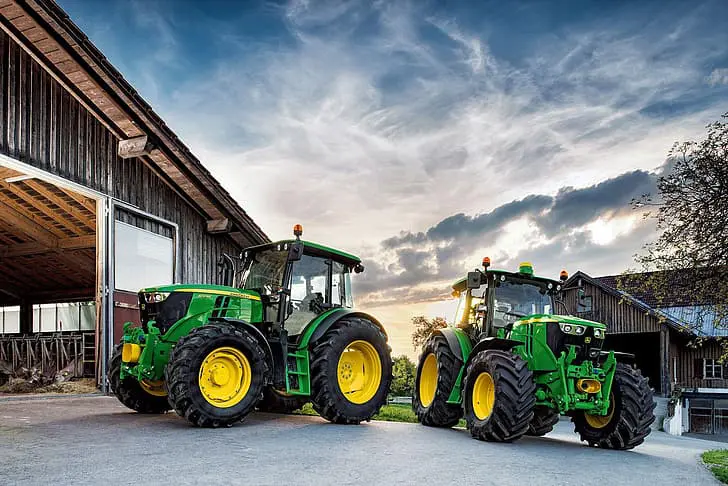
Ready to mix things up a bit? Great, because now we’re diving into the world of crop diversification and shifting.
Think of it like a chef experimenting with new ingredients to create a more exciting menu. Farmers are doing the same thing with their crops, and for good reason.
Sticking to just one or two types of crops can be risky, especially when the climate is throwing curveballs.
In this section, we’ll explore how diversifying crops and even shifting to entirely new ones can make a farm more resilient and productive.
Crop Shifting
First up, let’s talk about crop shifting. This is basically the agricultural version of switching careers.
Maybe you’ve been growing corn for years, but now, due to changing climate conditions, it’s just not as profitable or sustainable as it used to be.
That’s where crop shifting comes in. Farmers are starting to grow crops that are better suited to their changing local climates.
For example, if an area is experiencing more frequent droughts, shifting to drought-resistant crops like millet can be a game-changer.
It’s like swapping out your wardrobe when you move from a cold climate to a tropical one. You adapt to thrive.
Returning to Native Plants
Next on the agenda is returning to native plants. You know how sometimes the old ways are the best ways?
Well, that’s definitely true when it comes to using native plants. These are plants that have naturally evolved to thrive in a specific region, making them well-suited to local soil and weather conditions.
Plus, they’re often more resistant to local pests. It’s like rediscovering a classic book on your shelf and realizing it’s just as relevant today as it was when it was written.
Going back to native plants can be a smart, sustainable choice for modern farming.
Fast-Growing Varieties
Last but not least, let’s discuss fast-growing varieties. Time is of the essence in farming, especially when you’re racing against unpredictable weather patterns.
Fast-growing varieties are the crops that are ready for harvest in a shorter amount of time, giving farmers a bit more leeway when it comes to timing.
Think of it like taking a shortcut on your daily commute, it gets you where you need to go, just a bit quicker.
These fast-growing crops can be a real lifesaver, especially for smallholder farmers who rely on each harvest for their livelihood.
Financial and Informational Support

Alright, let’s switch gears and talk about something that’s often overlooked but incredibly important, financial and informational support.
You know how having the right tools can make any job easier? Well, the same goes for farming, especially when adapting to climate change.
Whether it’s grants to invest in new technology or weather forecasts that help plan the planting season, the right support can make all the difference.
In this section, we’re going to delve into the various types of support that are helping farmers not just survive, but thrive in these challenging times.
Improved Insurance Options
First on our list is improved insurance options. Now, insurance might not be the most exciting topic, but when it comes to farming in a changing climate, it’s a real game-changer.
Imagine having a safety net that not only catches you when you fall but also helps you bounce back even higher.
That’s what modern agricultural insurance can do. From policies that cover crop loss due to extreme weather events to those that provide income support during lean seasons, insurance is evolving to meet the unique challenges posed by climate change.
It’s like having a really good backup plan that gives you the freedom to innovate and take calculated risks, knowing you’re covered if things don’t go as planned.
Weather Advisory Systems

Next, let’s talk about weather advisory systems. Picture this: You’re a farmer, and you’ve got a smartphone that sends you real-time weather updates tailored to your specific location.
Sounds simple, right? But this kind of targeted information can be a lifesaver, helping you make timely decisions about when to plant, irrigate, or harvest.
It’s like having a personal weather forecaster who helps you plan your farming activities down to the last detail.
And the best part? These systems are becoming more accessible, often available as simple mobile apps, making it easier for farmers everywhere to benefit from timely, accurate weather information.
Global and Local Initiatives

Ready to zoom out a bit and look at the bigger picture? Awesome, because now we’re going to explore global and local initiatives that are making waves in the farming world.
It’s like when your local sports team gets a shoutout on national TV; it’s a big deal that brings attention and resources to where it’s needed most.
From carbon credit programs that reward sustainable farming to community-led initiatives that bring farmers together to share knowledge and resources, there’s a lot happening on both the global and local stages.
Curious to see how these initiatives are shaping the future of farming? Let’s get into it!
Carbon-Credit Programs
First up, let’s chat about carbon credit programs. Imagine you’re a farmer who’s been working hard to reduce your carbon footprint.
Then one day, you get a check in the mail as a thank-you for your efforts. Sounds pretty great, right?
That’s essentially what carbon credit programs do. They offer financial incentives to farmers who adopt sustainable practices that reduce greenhouse gas emissions.
It’s like a rewards program for being eco-friendly. These programs not only make it financially viable for farmers to go green but also contribute to larger goals of reducing global carbon emissions.
Community Involvement
Now, let’s move on to community involvement. You know how the saying goes, “It takes a village”?
Well, when it comes to adapting to climate change, that couldn’t be more true. Community involvement can range from local farmers’ markets that support sustainable agriculture to community gardens that educate people on climate-smart practices.
It’s like a neighborhood watch, but for farming. These community-led initiatives create a support network that allows for the sharing of resources, knowledge, and even manpower.
In times of crisis, like a sudden weather event, these community bonds can be invaluable.
Plus, when a community comes together to support a cause, it often attracts the attention and resources of larger organizations, amplifying the impact.
FAQs
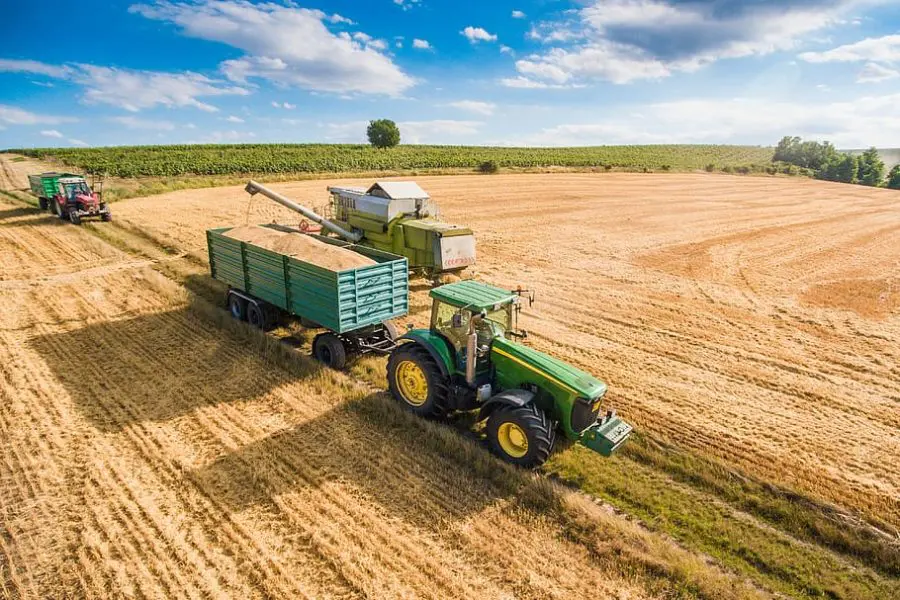
So, you’ve got questions? Perfect, because we’ve got answers! From understanding drought-resistant crops to decoding the role of technology in climate adaptation, we’re tackling the questions that are on everyone’s mind.
Whether you’re a farmer looking for tips or just someone who’s curious about how all of this works, you’ll find some valuable nuggets of information here. Ready to get those burning questions answered? Let’s dive in!
Q: What are drought-resistant crops?
A: Drought-resistant crops are plant varieties specifically bred to thrive in conditions with limited water availability.
Think of crops like millet, sorghum, and certain types of legumes.
These crops have unique characteristics, like deep root systems or waxy leaves, that help them conserve water and survive in drier conditions.
It’s like having a car that’s really good on gas mileage; it can go further on less fuel.
Q: How can technology help in climate adaptation?
A: Technology plays a pivotal role in climate adaptation by offering tools that make farming more efficient and resilient.
For example, precision farming uses drones and sensors to monitor field conditions, allowing farmers to apply resources like water and fertilizer only where needed.
Weather advisory apps provide real-time forecasts, helping farmers make timely decisions.
It’s akin to having a Swiss Army knife for farming; each tool serves a specific purpose to make life easier.
Q: What is the role of soil health in climate adaptation?
A: Healthy soil is crucial for climate adaptation because it serves as the foundation for robust crop growth.
Practices like adding organic matter or using cover crops improve soil structure, water retention, and nutrient availability.
Q: What are the adaptation strategies for climate change?
A: Adaptation strategies range from technological solutions like optimized irrigation systems to traditional practices like extended crop rotations.
Financial and informational support, like improved insurance options and weather advisory systems, also play a role. It’s like having a multi-layered defense strategy.
Q: What are four examples of adaptation to climate change?
A: 1) Using drought-resistant crops to combat water scarcity.
2) Implementing sensor-based irrigation systems for efficient water use.
3) Shifting to native plants that are naturally suited to local conditions.
4) Community-led initiatives that pool resources and knowledge for sustainable farming.
Consider these examples as different paths up the same mountain; they all lead to the goal of making agriculture more resilient to climate change.
Conclusion
Well, folks, we’ve covered a lot of ground, haven’t we?
From the nitty-gritty of soil health to the high-flying world of drone technology, we’ve explored the many ways farmers are adapting to our changing climate.
But as we wrap things up, let’s take a moment to reflect on what all this means for the future of farming and why it matters to each and every one of us. Ready for some final thoughts? Let’s bring it home!
The Need for Immediate Action and Future Research
As we wrap up this comprehensive look, let’s focus on the urgent need for immediate action and future research.
Climate change is affecting us now, and the agricultural sector, especially in the United States, is on the front lines.
The effects of climate change are already impacting natural resources and crop production.
Immediate action is like putting a band-aid on a cut. It’s essential for immediate relief and to prevent further damage.
This could mean adopting some of the incremental changes or technological innovations we’ve discussed earlier, like carbon sequestration techniques to reduce carbon dioxide emissions.
But let’s not forget about the long game. Future research is the ointment that helps the wound heal completely over time.
We need more studies, more data, and more innovations to create sustainable and long-lasting solutions.
Whether it’s researching new crop varieties that can withstand high temperatures or developing even more efficient irrigation systems, the work is far from over.
Technical assistance plays an important role here, especially at the local level.
In regions like Sub-Saharan Africa, where the impacts of anthropogenic climate change are severe, focus groups are gathering farmers’ perceptions on climatic changes and adaptation practices.
So, while we’ve made strides in agricultural production and climate change mitigation, let’s not take our foot off the gas.
The journey toward fully adapting to global climate change is a marathon, not a sprint, and every step counts.
From the good news of longer growing seasons in some parts of the world to the negative impacts of extreme weather conditions, it’s clear that our actions today will shape the agricultural practices of tomorrow.
And that’s something we all have a stake in, from small farms to industrial agriculture sectors, from the World Bank to local focus groups

